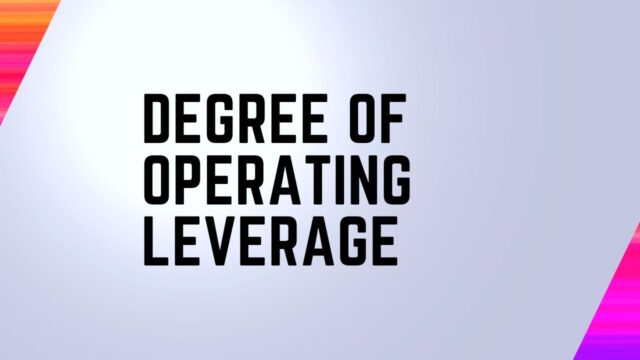
What is Degree of Operating Leverage and what does it measure
The degree of operating leverage (DOL) is a financial ratio that measures the amount of fixed costs a company has relative to its variable costs. This ratio is used to assess a company’s sensitivity to changes in revenue, and it can be a helpful tool for both investors and managers. A company with a high DOL is more sensitive to changes in revenue, which means that small changes in sales can have a large impact on profitability.
Conversely, a company with a low DOL is less sensitive to changes in revenue, and it may be better able to weather periods of slow sales. The degree of operating leverage can also be used to compare companies within the same industry. In general, companies with high DOLs are considered to be more risky than those with low DOLs. However, there are exceptions to this rule, and it is important to consider all factors before making any investment decisions.
How to calculate Degree of Operating Leverage
DOL is calculated by dividing a company’s EBIT by its sales. The higher the DOL, the more sensitive EBIT is to changes in sales.
For example, let’s say Company A has an EBIT of $10,000 and sales of $100,000. This gives it a DOL of 10%. Now, let’s say Company B has an EBIT of $20,000 and sales of $200,000. This gives it a DOL of 20%. Company B is said to have a higher DOL than Company A because a given change in sales will have a greater impact on its EBIT.
DOL is an important tool for financial analysis because it can help investors understand how changes in revenue will affect a company’s bottom line. It is also a useful tool for managers, as it can help them make decisions about pricing and production levels.
What factors influence Degree of Operating Leverage
The factors that influence the degree of operating leverage are fixed costs, variable costs, and the mix of products sold. Fixed costs are expenses that do not vary with changes in production or sales volume, such as rent and insurance. Variable costs are expenses that do vary with changes in production or sales volume, such as raw materials and labour. The mix of products sold refers to the relative proportion of high-margin products to low-margin products in a company’s product line. A company with a higher proportion of high-margin products will have a higher degree of operating leverage than a company with a lower proportion of high-margin products.
What are the benefits of high Degree of Operating Leverage
The benefits of high degree of operating leverage are twofold. First, it allows a business to generate more sales with less investment in inventory and other variable costs. Second, it amplifies the impact of changes in sales on earnings. For example, if a business with a high degree of operating leverage generates an additional $1 million in sales, its earnings will increase by more than $1 million.
That’s because the fixed costs are spread across a larger base of sales, resulting in a higher margin. Conversely, if sales decline, the drop in earnings will be amplified. While the benefits of high degree of operating leverage are clear, it’s important to remember that this strategy also carries risk. A sudden drop in sales can cause earnings to plunge, and businesses with high levels of debt may find it difficult to meet their financial obligations.
What are the risks associated with high Degree of Operating Leverage
The risks associated with high DOL include:
1) High fixed costs – If a company has a high fixed cost structure and faces decreasing demand, it will be squeezed financially since it cannot easily reduce its costs.
2) Interest rate risk – If a company has a large amount of debt, it will be more sensitive to interest rate changes. An increase in interest rates will increase the company’s borrowing costs and reduce its profits.
3) Exchange rate risk – When a company borrows in a foreign currency, it is exposed to exchange rate risk. If the value of the foreign currency increases, the company’s debt burden will increase and its profits will decrease.
4) Commodity price risk – If a company’s products are made with commodities, it is exposed to commodity price risk. If the prices of commodities rise, the company’s costs will increase and its profits will decrease.
5) Business cycle risk – A cyclical business is more risky than a non-cyclical business because it is more susceptible to changes in the economy.
How to use DOL to make business decisions
The degree of operating leverage can be used to make business decisions about whether to expand or contract a business. For example, if a company has a high DOL, it may be riskier to expand because small changes in sales could have a large impact on earnings. However, if a company has a DOL, it may be less risky to expand because earnings are less sensitive to changes in sales. Therefore, the degree of operating leverage is an important tool for managing risk and making business decisions.


































